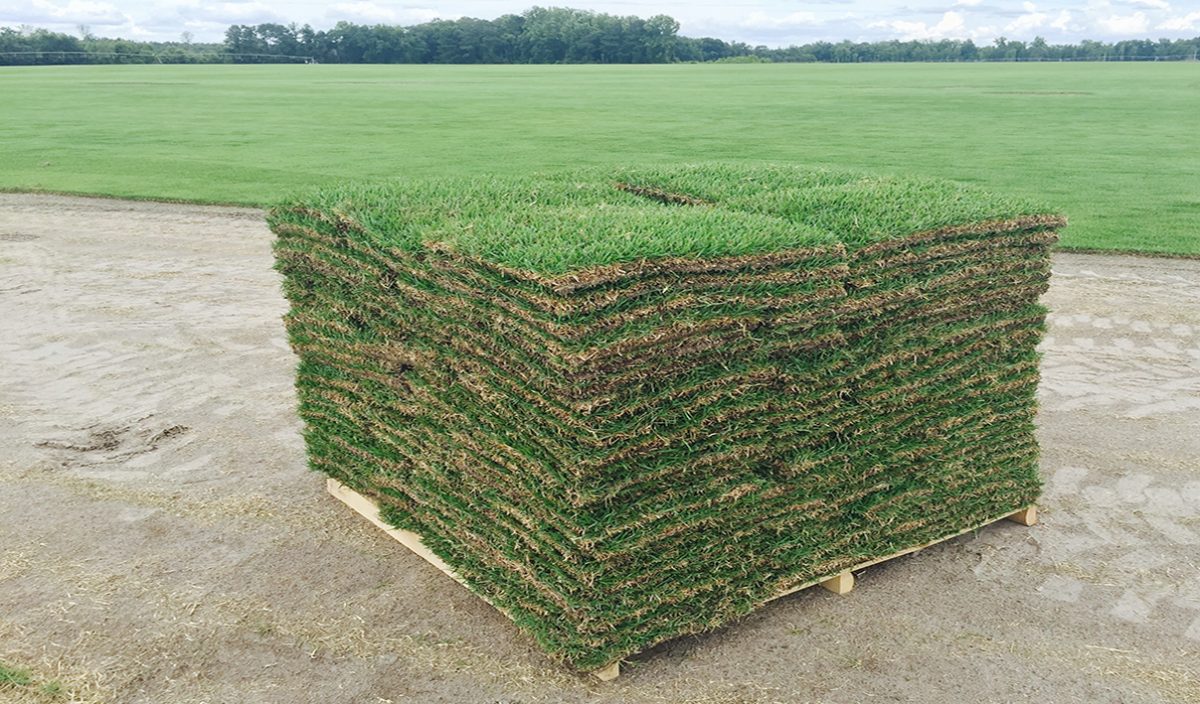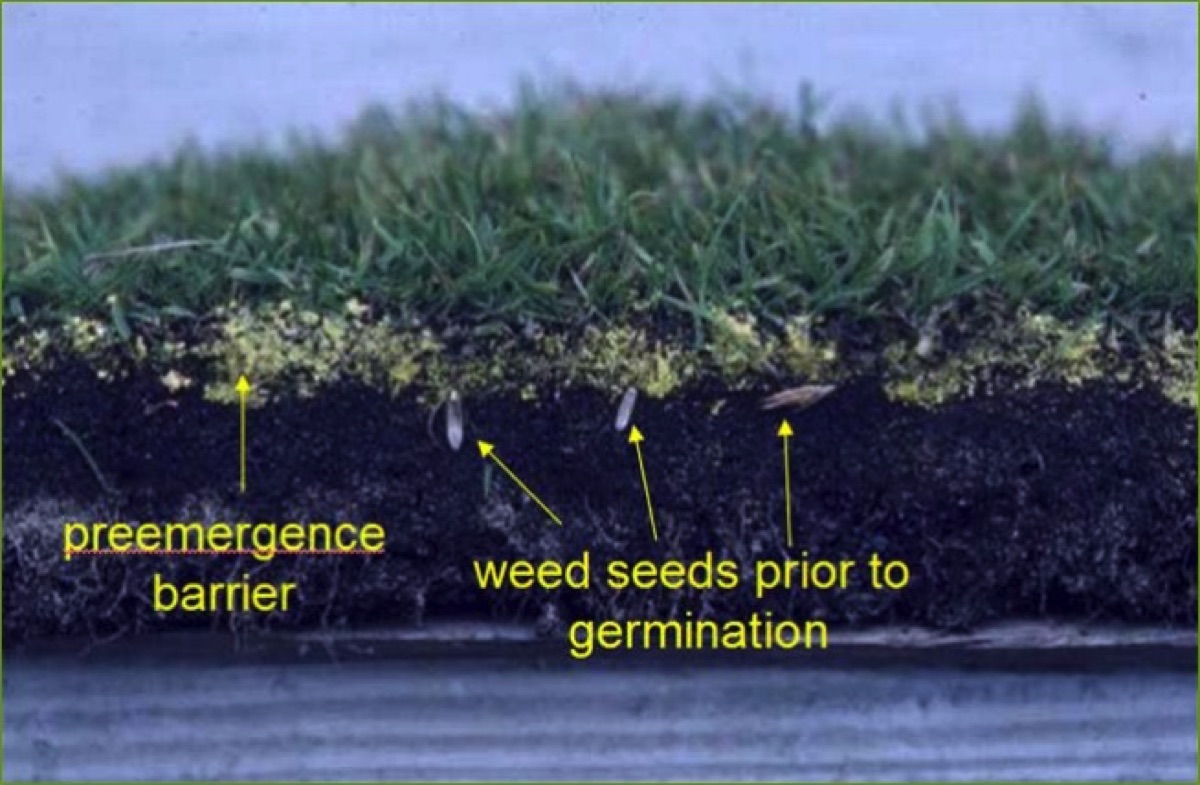Thanks to our friends at Sod University and Todd Valley Farms for this contribution.

Spring Weed Control: The Effective Use of a Pre-Emergent Herbicide
There is a lot of false data and misinformation surrounding pre-emergent use on lawns. Pre-emergents, when used properly, can be one of the most effective tools for keeping your yard healthy and weed free. It is important to understand how they work and what their limitations are before you can truly harness the power of this tool. First, it is important to note the difference between pre-emergent and post-emergent herbicides. A pre-emergent, as its name suggests, prevents the weed from emerging in the first place—this is useful if you are expecting the same kind of weed to appear annually or to control weeds before they appear so that you can reduce labor spent outside hand-pulling them. A post-emergent herbicide kills weeds after they have already appeared—you’ve already spotted them growing in your lawn. Nick Radford of Todd Valley Farms Inc., who discusses the effective use of a pre-emergent as the season for spring pre-emergent applications grows closer.
Contrary to popular myth, pre-emergents do not prevent seeds from germinating. They attack seeds during the germination process. Pre-emergents work by blocking the plant from producing the protein that allows plant cells to divide during mitosis. This cell division is what we see as growth. The initial cell division happens inside the seed coat. If the seed does mature past this stage, the root development will have been damaged, causing the plant to die lacking the ability to properly find or process nutrition. The pre-emergent then also acts as a root pruner. This causes young vulnerable roots to turn inward and stunts their growth.

Photo Credit: www.geckopest.com
The other myth that I often hear is that if you aerate your lawn after applying a pre-emergent, it will make the pre-emergent ineffective. This is also not 100 percent true. It is not something that you should do as it does not help the effectiveness. However, if you must aerate after an application, it will not completely ruin the effects of the pre-emergent. Pre-emergents stay in your soil and create a barrier layer that seeds in this zone are affected by. The soil removed during the aeration process will break apart and fill back into the holes over time or you discard the dirt plugs letting the holes fill back in with remaining soil. In the case of the latter, you have wasted money on the pre-emergent that remained in the soil plugs you discarded.

Photo Credit: www.horizononline.com
Should I use a pre-emergent upon sod installation, seeding or plugging?
Use of a Pre-Emergent Upon Sod Installation or Seeding
There is no reason to use pre-emergent on newly laid sod. If you have taken all the proper steps prior to putting the sod down and thoroughly sprayed out all the pre-existing weeds, there should be few weeds that survive. Those that do survive are easily pulled by hand or controlled with a post-emergent later. It is important to know that the root pruning effect of the pre-emergent is damaging to sod. Some varieties of turfgrass are less susceptible to major damage, but it is not healthy for any variety. When you are seeding a lawn on the other hand, your common pre-emergents will kill the seed that you put down. It is never recommended to use Prodiamine, Dithiopyr, Isobexen or any derivative of these when seeding. It will destroy your lawn 100 percent of the time.
Use of a Pre-Emergent Upon Plugging
When you are plugging a lawn, it is highly recommended to use a pre-emergent. After spending a lot of time on experimenting with different pre-emergents on different types of plugs, I have not found one yet that damages the plugs. In fact, when you plug your lawn without pre-emergents, it takes two to three times longer for the yard to fill in!
I have read many, many university studies on pre-emergent herbicides and researched how pre-emergents work. Based on the studies and the data I found, this should not be the case. The root pruning properties and the effect it has on mitosis should prevent the plug from spreading or maybe living at all. I have a few theories for why this is not true for plugs. The best reason I can give is this: the stolons the plugs spread out obtain enough nutrients from the mother plant to sustain the root development through the layer of pre-emergent. The original plug is mature enough to not be affected by the pre-emergent. Whatever the reason, I have seen no damage to plugs using pre-emergent and the reduction of competition from weeds allows the plugs to fill in at an accelerated rate. Also, warm season grasses can have negative effects when post-emergent weed killers are applied in temperatures over 90 degrees Fahrenheit. For this reason as well, it is better to control the weeds before they become an issue.
When Should Pre-Emergents Be Applied?
Pre-emergents should be applied at least twice a year. They should be applied in the spring before the ground temperature reaches 55 degrees Fahrenheit. Then it should be applied again in the early fall after temperatures begin to come down. The exact dates for this differ depending on the climate zone you live in. It is my personal practice to make three applications a year: March 1st, June 1st and September 1st. A good tip is that it is better to apply it early rather than late. As previously stated, pre-emergents do not kill existing weeds—putting it down after weed seeds have germinated is not effective. Unless it is washed away by heavy rains, pre-emergents will remain dormant in your soil until the soil temperatures rise. So, applications made in the late fall may still be effective the following spring.
When you use it while planting grass plugs, you should put pre-emergent down immediately following the planting of the plugs. I recommend applying it to newly planted plugs every three months until the area has filled in completely. It should not be used if you have overseeded or intend to overseed within six to eight weeks (or sometimes longer depending on the pre-emergent used).
Which Pre-Emergent Should I Use?
There are many types of pre-emergents and many pre-emergents are the same with a different name. The two most common are Prodiamine and Dithiopyr (Dimension 2EW). These are both good products and they both are easy to find and apply. It is important to know that no single pre-emergent works for all weed types. Prodiamine is less expensive and stays put in your soil longer. Dithiopyr is a little more expensive and can wash through your soil more easily, but it also has post-emergent properties that others do not have. It will kill young weeds up to the three-leaf stage of growth. This makes it a better choice if you are slightly late with your application. Most premixed over the counter pre-emergents have two or more varieties mixed to cover a broader spectrum of weeds. I personally like to use a combination of Prodiamine, Dithiopyr and a small percentage of Isoxaben (linked below). I have found this to be the most effective for the large variety of weeds I encounter.



